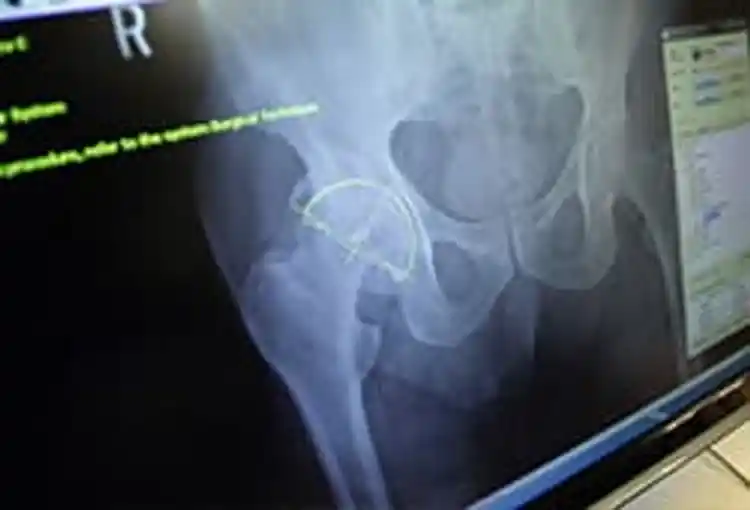Inside Hip Replacement Surgery

Hide Video Transcript
Video Transcript
John Henry, MD
Welcome to the operating room. I'm Dr. John Henry. I'm an orthopedic surgeon and we're about to perform a total hip replacement for a patient with severe osteoarthritis of the hip. Total joint rooms are probably one of the most sterile operating rooms you'll find in most hospitals. So that we do not introduce bacteria into the wound that could be devasting to an implant we take extra precautions in surgery. We wear astronaut suits so that we do not ventilate any of our breath in towards the wound.
Blue gloves are used so that if there's a hole in the white glove, you can see the blue, especially if your hands are a little wet. There's an antibiotic impregnated in the sheet, which is real sterile and it seals off and isolates bacteria basically from everywhere rather than leaving exposed surface area of skin.. We think of everything we can to prevent infection because the consequences of an infection can be devastating.
One nice thing about using a modular implant such as this is that if one component of the total hip system begins to wear out or fail, you can actually go in and replace just that component without having to redo everything. These operations are actually rehearsed now on digital x-rays before we ever get to the operating room, so we have a rough idea about what size of implants we're going to be using.
So we are opening now…
Today we're using a posterolateral approach, probably one of the most common approaches that you'll see with total hip replacements.
We've successfully dislocated the hip and removed the femoral head, or ball to the ball and hip socket, So here's some cartilage here, but there's no cartilage there, that's basically raw bone and he's been walking on a surface of raw bone there and that's very uncomfortable.
Bones are as you know very rigid tissues so we have to utilize mechanical tools to prepare them properly to receive the implant. With respect to hip replacements, the materials have improved significantly in the last decade. And those have benefited patients by having longer lasting hips than ever before. So this is our size we template,a four. We'll see how that fits… pretty good fit! He's lost cartilage in the hip socket. So what remains of the hip socket we'll smooth We have a trial femoral component, we have the real socket piece in place, now we'll check the position.
At this point in the case, we bring in an Xray unit to just verify that the implant is appropriately placed. We want it tight enough that patient can walk on it, but not too tight such that when we place the real implant, we could potentially sustain a fracture. So what we're trying to do is make sure we're good and stable, that the hip can go into all kinds of crazy positions without dislocating. That's really good. That's awesome. You don't get any better than that. As we're closing the wound, we want to make sure that we irrigate all aspects of the wound real carefully. That way, we are able to flush out any bacteria that might have gotten into the wound during the case, even despite our meticulous techniques.
Once we've finished the operation and a sterile dressing has been applied, we then carefully move the patient over to the recovery room. Patients can either start physical therapy that day or the next morning. Early mobilization helps prevent blood clots in the legs, pnemonias, bed sores and other things and gets people up and moving right away.
